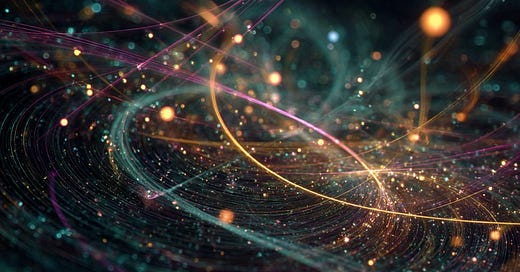#773 Create Stunning Quantum Science Art with Electron Microscope Aesthetics
Discover how electron microscope aesthetics bring scientific wonder to contemporary AI art
🔬✨ Ready to make quantum physics visually stunning? Electron microscope AI art awaits discovery! #ScienceArt ✨ #AIArtDaily #creativeai #AIart
Hey there, 👋
Today we're exploring scientific visualization art with a little help from AI!
The Art of Scientific Communication
Creating meaningful scientific imagery connects to a proud tradition stretching from Leonardo da Vinci's anatomical drawings to modern space telescope photography. The greatest scientific illustrators understand that complex concepts become accessible when presented through thoughtful visual design that balances accuracy with aesthetic appeal.
With AI, we can visualize phenomena that exist beyond the reach of traditional photography or direct observation.
Understanding the Elements
Creating compelling scientific visualization relies on three core components:
Conceptual Clarity: The foundation rests on translating abstract scientific principles into visual metaphors that viewers can understand intuitively. Complex quantum behaviors, molecular interactions, and atomic structures become approachable when represented through familiar visual language enhanced with scientific accuracy. This approach builds the base for educational art that teaches while it captivates.
Technical Authenticity: Different levels of scientific detail emerge when you balance artistic interpretation with research-based accuracy. The magic happens when creative visual choices support rather than contradict established scientific understanding, creating artwork that scientists respect and general audiences can appreciate.
Visual Impact: Various design elements enhance the artwork's ability to communicate complex information effectively. Strategic use of color coding, scale relationships, and compositional hierarchy creates images that guide viewer attention through layered scientific concepts without overwhelming or oversimplifying.
The Power of False Color Enhancement
Scientific imaging often relies on false color techniques to reveal information invisible to human eyes. This approach transforms data from instruments like electron microscopes, radio telescopes, and spectral analyzers into visually stunning representations that communicate scientific discoveries. The careful selection of color palettes can highlight different aspects of the same phenomenon, making complex data both beautiful and informative.
Finding the right balance between scientific accuracy and visual appeal determines whether your artwork educates or merely decorates.
Style Approaches
Different artistic approaches create distinct results:
Documentary Scientific approach emphasizes research accuracy and educational value. This style draws directly from actual scientific imaging techniques, laboratory photography, and peer-reviewed research illustrations. The focus stays on creating artwork that could support scientific publications while maintaining visual appeal for broader audiences.
Interpretive Visualization approach creates artistic representations that illuminate scientific concepts through creative visual metaphors. This style incorporates design elements that make abstract theories tangible, using color, movement, and composition to explain phenomena that exist beyond direct human perception.
Speculative Science approach delivers imaginative interpretations that push beyond current imaging capabilities. This style balances scientific plausibility with artistic vision, creating artwork that suggests what advanced future instruments might reveal about quantum phenomena and molecular behaviors.
Want to turn these ideas into actual art? Let's get down to the prompts…


